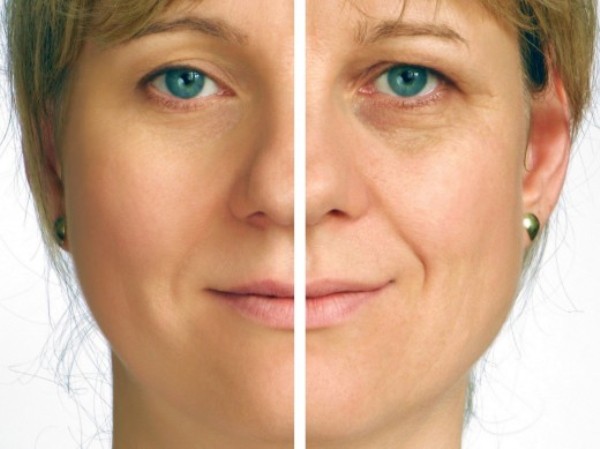
Skin, being the most visible and exposed part of the body, is most susceptible to diseases, ranging from simple itches to harsh rashes. No two people have same skin. Every person has different color, texture and growth. Moles, stretch-marks and spots are different for different people, and are usually harmless.
Skin changes are of two types: One, which occurs at the time of birth, and one which occurs at any other point of life. Usually, skin changes, such as spots, freckles and rashes, that appear during the time of birth get treated automatically as time progresses. These changes – also known as “birthmarks” – are usually harmless, and do not require treatment. There are some skin-changes though, that are harmful, and require instant care and treatment.
Cause of skin changes
There are different types of skin-changes, and each type has its own cause for appearance.
1. Acne
It is the most common skin-change, which usually appears during teenage years due to hormonal changes, and goes on till adulthood. Acne ranges from harmless blackheads to very painful and large pimples under the skin. Acne mostly appears on the chest, back and face, though hands and legs also become the victims. Acne is more common in boys than in girls.
2. Dark Patches
These appear during the time of pregnancy. Medically known as chloasma, these patches appear on the face, making the victim look like wearing a mask. The cause of its appearance is still shrouded in mystery, but most of the experts believe that it is due to increased production of pregnancy hormones, which, in turn, increases the production of skin-pigments. These patches usually disappear after pregnancy.
3. Color skin spots
Color skin spots occur due to prolonged sun-exposure. Although they are not a type of skin-cancer, their appearance indicates the increased chances of skin-cancer hitting the body.
4. Allergies
Allergies are the most common type of skin-changes. They occur due to allergic reaction to a medicine or any item. Allergies are indicated by rashes, hives and itches.
5. Skin cancer
This disease destroys skin-cells, and spreads to other parts of the body, killing down other cells in the process.
The main causes of skin-cancer are:
a. Overexposure to the sun during childhood or adulthood.
b. The use of tanning beds or sunlamps.
c. Prolonged exposure to harmful radiations (X-rays or radioactive rays) and chemicals
Other skin changes causes
-
Autoimmune diseases
-
Animal bites
-
Bacterial skin infections
-
Viral infections
-
Liver problems
Prevention
1. Most of the skin-changes can be treated both chemically and using household techniques.
2. For chemical-treatment, it is better to consult a dermatologist, who is specialized in the field.
3. Home-treatment is not always effective, but helps to bring relief and control to the changes.
4. Most skin-changes that occur from birth, such as moles, are harmless and do not require treatment at all.
However, the following practices can be followed for relief and control:
1. Keep the area clean and dry.
2. Wash, without scrubbing, with a mild soap and warm water.
3. Avoid things that lead to irritation in the area, like squeezing, scratching, or picking at the spot.
4. Try to wear clothes that do not rub with the affected area. Use bandage, if necessary.
5. Leave the affected area exposed to air.
6. Use cosmetics to hide birthmarks, such as moles.
7. Use a humidifier in your home in the winter or dry season.
8. Take a bath after swimming to wash chlorine or salt water off the body. Use a moisturizer after showering.
9. Keep yourself updated with your skin changes by undergoing skin-tests regularly.
10. Eat a balanced diet and drink plenty of water.
11. In case of symptoms related to infection or allergies, it is better to go for the following measures:
12. Wash the spot gently and regularly using an antiseptic soap. Avoid using perfumed soaps as they contain more skin irritating chemicals.
13. Keep the spot exposed to air as much as possible, try not to let it become irritated or dirty. Exposure to air increases the development of the healthier skin-cells.
14. If a spot becomes dirty or irritated, use an antiseptic ointment with a bandage to avoid the bandage from sticking to the affected area. However, some ointments may not agree with the skin. In such a case, stop using it if the skin under the bandage begins to itch or develops a rash.
15. Change the bandage every day and any time it gets wet. In case of dressing getting stuck with the affected area, use warm water to soften the skin around the affected area, which will make it easier to remove the bandage.
16. Always keep looking out for other signs of infection, such as redness and boils.
17. Go for skin-protecting cosmetics and ointments, which do not irritate the infected areas.
It is always best to keep looking out for abnormal things happening to the skin. At the very start, such things may appear common and not worth mentioning or rushing for treatment. But later on, the very same symptoms may lead to severe diseases. For instance, a type of skin-cancer starts with an innocent-looking mole on the body which attracts itching and irritation. So it is good to keep a track of changes taking place on your skin. It can be done by following the steps below:
1. Symptoms of skin-infection, such as pus, a rash and spots, should not be ignored. Go for treatment as early as possible.
2. Look out for moles or colored skin spot, which can be of the following kinds and may show changes:
a. Ulcers
b. Changes in size, shape, or texture
c. Increasing sensitivity, itchiness or pain
3. If symptoms do not show any kind of improvement, take a medical help.


